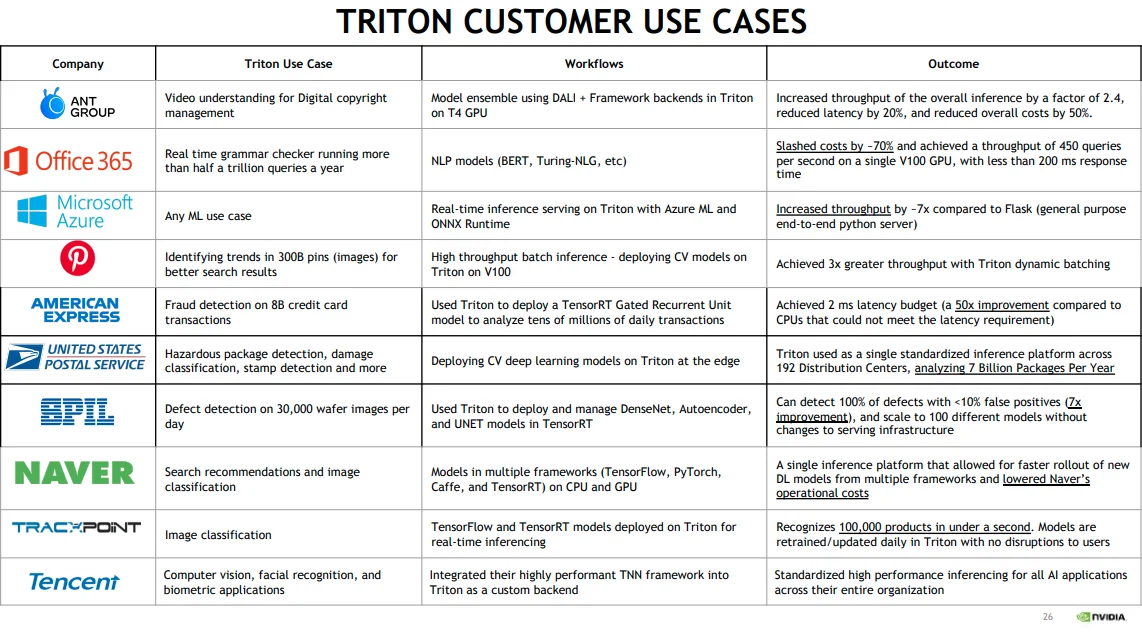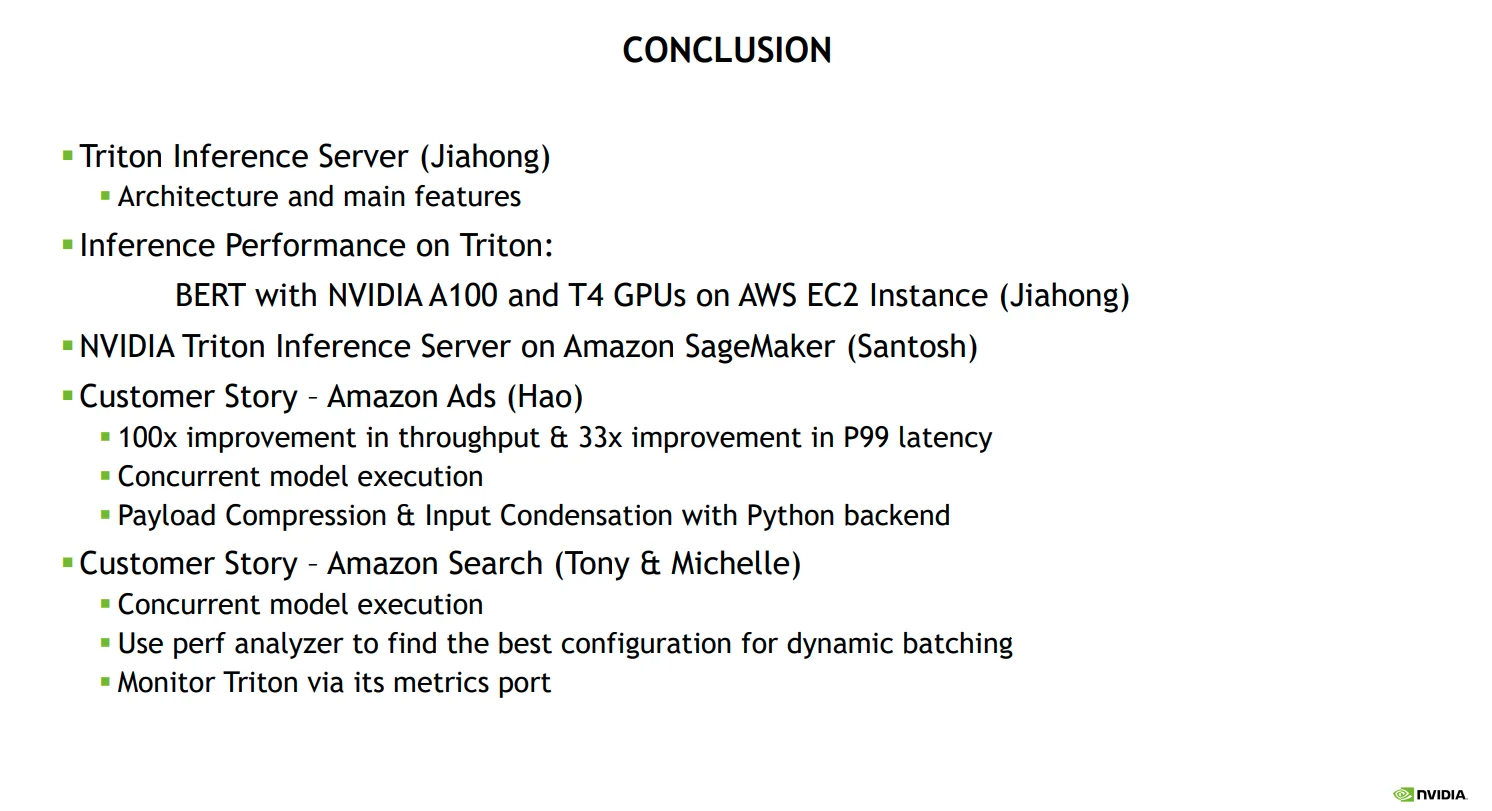Python library to optimize Hugging Face transformer for inference: < 0.5 ms latency / 2850 infer/sec
We just launched a new open source Python library to help in optimizing Transformer model inference and prepare deployment in production.
It’s a follow up of a proof of concept shared here. Scripts have been converted to a Python library (Apache 2 license) to be used in any NLP project, and documentation has been reworked. We also added direct TensorRT support, which provides another boost in performance compared to the ORT+TRT backend. It will usually provide you with 5X faster inference compared to vanilla Pytorch, and up to 10X in specific cases. On a RTX 3090, perf_analyzer reports over 2800 inferences per second throughput!
Want to try it 👉 https://github.com/ELS-RD/transformer-deploy
The README includes some benchmarks on small, base and large transformer architectures to give you an idea of how large the benefit can be.
To learn more about the whole process you can also check this article showing how this open source library can beat some commercial product from Hugging Face company.
Why this Python library?
Basically, most tutorials on how to deploy in production a transformer model tell you to take FastAPI and put Pytorch inside. There are many reasons why it’s a bad idea, first of all, the inference performance is very low.
On the other side of the spectrum, there is Nvidia demos (here or there) showing us how to build manually a full Transformer graph (operator by operator) in TensorRT to get best performance from their hardware. It’s out of reach for many NLP practitioners and it’s time consuming to debug/maintain/adapt to a slightly different architecture (I tried). Plus, there is a secret: the very optimized model only works for specific sequence lengths and batch sizes. Truth is that, so far (and it will improve soon), it’s mainly for MLPerf benchmark (the one used to compare DL hardware), marketing content, and very specialized engineers.
The usual way to perform model optimization before deployment is to automatically convert your existing Pytorch / Tensorflow model to some kind of graph, apply some optimizations, and deploy the artefact in a production ready inference server.
For the optimization part, this project leverages both Nvidia TensorRT and Microsoft ONNX Runtime, then you can choose the best optimized models (benchmark is performed after optimizations). For the inference server, the library will generate the whole configuration for the Nvidia Triton inference server.
Triton is a mature tool, its API is clear, its documentation covers all typical use cases, etc. Some features may require some ML deployment knowledge but nothing complex. For TensorRT, it’s another story, the documentation is both vast and sometimes incomplete, its API evolves rapidly, there are many traps, like in the way you setup model precision or allocate memory in the GPU RAM. We have not found a single OSS project to take a random Hugging Face model and simply optimize it with TensorRT. Still, the tool provides the best performance, and we hope this library will help most NLP practitioners to benefit from it.
As we only target Hugging Face Transformer models, we have made the experience very simple, it only requires a single command line for the whole process!
If TensorRT and Triton are unknown to you, please find below 2 slides from the recent Nvidia GTC 2021 conference:
From slides
At the Amazon presentation, we learned that Amazon search and Amazon ads (aka the 💸💰🤑 generators) are also built over Triton inference servers.
From slides
Still not enough to convince you that you may benefit from them?
Check that article from Microsoft where you will learn that Microsoft Bing is built over Nvidia TensorRT https://blogs.bing.com/Engineering-Blog/october-2021/Bing-delivers-more-contextualized-search-using-quantized-transformer-inference-on-NVIDIA-GPUs-in-Azu
You got it, if ONNX Runtime, TensorRT and Triton are the big guys' tools, they may also help you in your own projects. Let’s democratize them!

